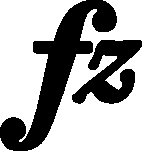



|
b. 179
|
composition: (Op. 4), Sonata in C minor, Mvt I
..
The A slur is clearly visible only from the 4th quaver; however, traces of pen are visible from the 2nd quaver. This is how it was reproduced by GE (→EE,IE). According to us, the later starting point of this slur than the one suggested by the phrase structure is an inaccuracy, probably caused by lack of space – a slur starting from the 1st quaver would intersect the natural, which could hamper the interpretation of this fragment. Due to the above, in the main text we begin the slur from the 1st quaver, as in bar 1 and as it was interpreted by FE. category imprint: Differences between sources; Editorial revisions issues: Inaccurate slurs in A , FE revisions |
||||||||||
|
b. 179
|
composition: Op. 12, Variations in B♭ major
..
In FE (→GE) we can see here "zf", which we change to the correct category imprint: Interpretations within context; Differences between sources issues: EE revisions , Inaccuracies in GE , Inaccuracies in FE |
||||||||||
|
b. 179
|
composition: (Op. 4), Sonata in C minor, Mvt I
..
The presence of two mutually exclusive dynamic indications in A can be explained by an unfinished correction – Chopin first wrote one indication and then the other one, probably planning to erase the first one together with the other marks that were supposed to be removed (e.g. the staccato dots in bar 102 or category imprint: Differences between sources; Editorial revisions; Corrections & alterations; Source & stylistic information issues: Corrections in A , Errors resulting from corrections , GE revisions , Errors of A |
||||||||||
|
b. 179
|
composition: Op. 12, Variations in B♭ major category imprint: Interpretations within context; Differences between sources issues: EE revisions , Errors in FE , Accidentals in different octaves , GE revisions |
||||||||||
|
b. 179
|
composition: Op. 12, Variations in B♭ major
..
It seems that the aim of the EE reviser's intervention could have been the standardisation of marks in both parts of hands – the L.H. chord is provided with a dot, as the preceding ones, which makes this mark more reliable than the single wedge in the R.H. in this fragment. However, in the main text we keep the FE markings, as the use of different marks in the parts of both hands can be easily explained by the textural context – the L.H. chord continues the current course, while the R.H. octave does not. category imprint: Differences between sources issues: EE revisions , Errors in GE , Wedges |

 in
in  in
in  in
in 
 raising c4 to c
raising c4 to c 4 was overlooked, which was noticed and supplemented both in
4 was overlooked, which was noticed and supplemented both in